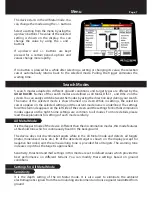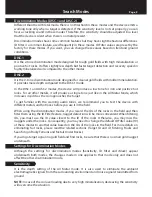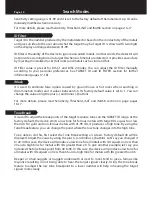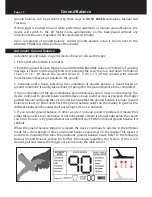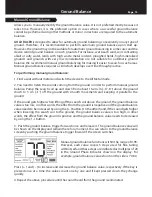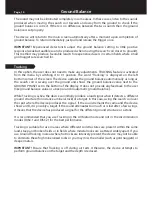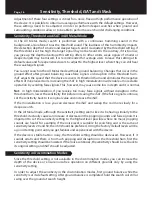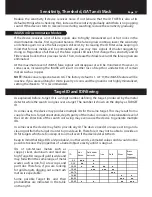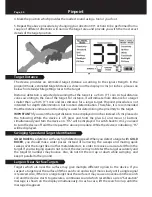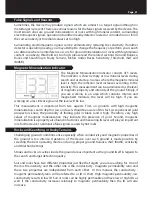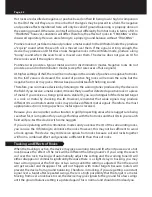
Rocks and Searching in Rocky Terrains
Magnetic Mineralization Indicator
False Signals and Reasons
Sometimes, the device may produce signals which are similar to a target signal although no
metal target is present. There are various reasons for the false signals received by the device. The
most known ones are ground mineralization or rocks with high mineral content, surrounding
electromagnetic signals, operation of another nearby detector, rusted or corroded iron or foil in
the soil, sensitivity or threshold values set too high.
Surrounding electromagnetic signals can be eliminated by reducing the sensitivity. If another
detector is operating nearby, you may attempt to change the frequency or perform your search
at a distance where no interference occurs. For ground mineralization or rocks with high mineral
content, sensitivity, threshold set too high, please read the related sections (Ground Balance,
Rocks and Searching in Rocky Terrains, Metals Under Rocks, Sensitivity, Threshold, iSAT and
iMASK).
Challenging ground conditions arise especially when conductivity and magnetic properties of
the ground is too intense. Operation of the device over such ground is made possible by
selecting the best operating mode and using proper ground balance, iSAT, iMASK, sensitivity
and threshold settings.
Stones and rocks or cavities inside the ground are as important as the ground itself in regards to
the search and target detection quality.
Soil and rocks have two different properties just like the targets you are searching for. One of
them is the intensity and the other one is the conductivity - magnetic permeability ratio and
these two properties are independent from each other. In this manual, the conductivity -
magnetic permeability ratio will be referred to as ID in short. High magnetic permeability, low
conductivity results in low ID. Soil or rocks can be highly permeable and have low or high IDs as
well. If the conductivity increases relatively to magnetic permeability then the ID will also
increase.
Page_21
The Magnetic Mineralization Indicator consists of 5 levels.
The indicator is shown empty at low mineral levels during
search and at start up. In areas where the magnetic mineral
level is high, the indicator level increases according to the
intensity. This measurement can be summarized as the level
of magnetic property and intensity of the ground. Simply, if
you are working in an area which contains intense and
magnetized minerals, the level will be high. If you are
working on a less intense ground, the level will be low.
This measurement is important from two aspects. First, on grounds with high magnetic
mineralization, search depth is low and users should be aware of this fact. As experienced gold
prospectors know, the possibility of finding gold in black sand is high. Therefore, very high
values of magnetic mineralization may indicate the presence of gold. Second, magnetic
mineralization is a property also found in hot rocks and measuring its level will play an important
role for the device to eliminate false signals caused by hot rocks.

